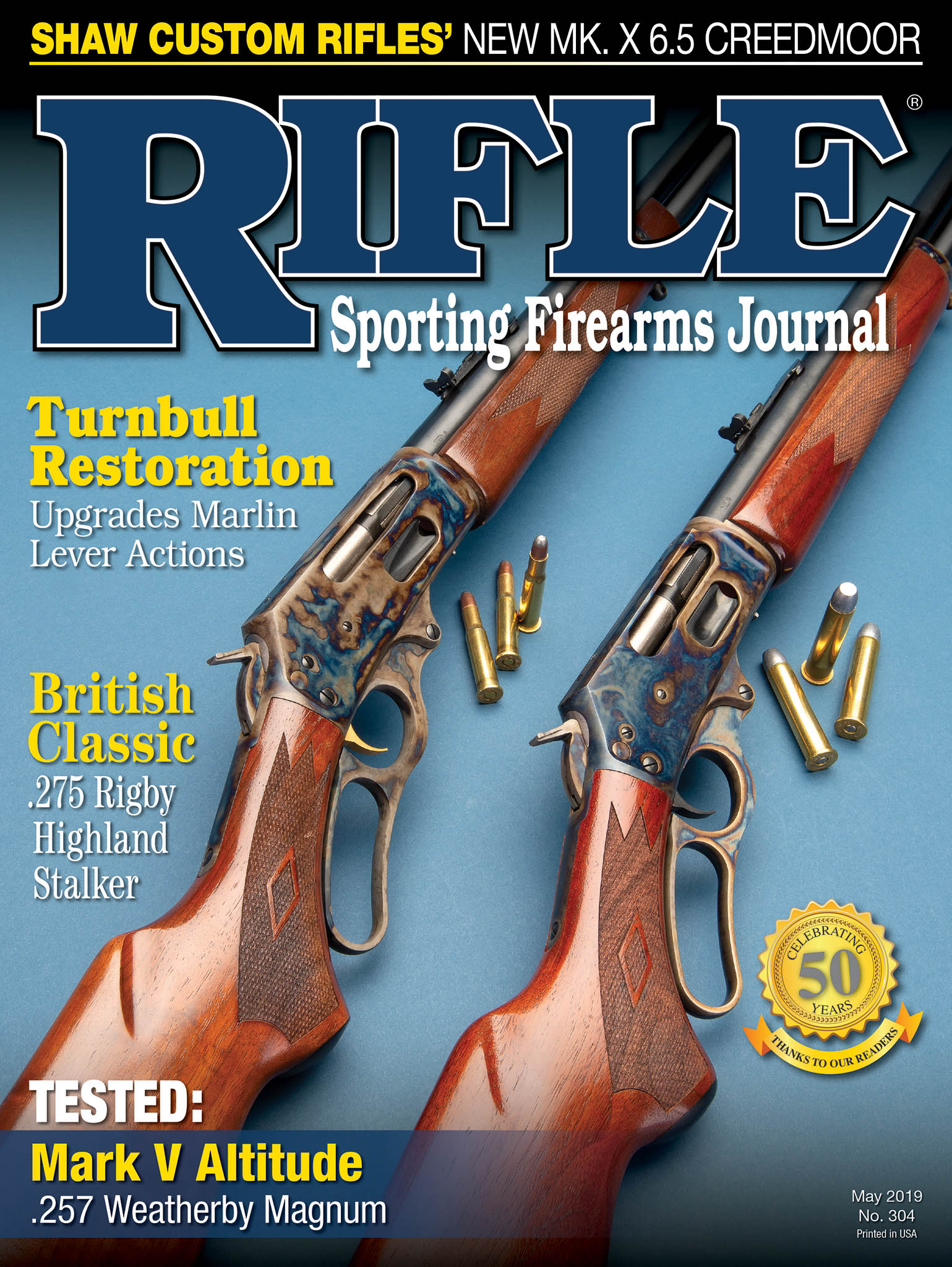A Rifleman's Optics
Laser Rangefinding Binoculars
column By: John Haviland | May, 19
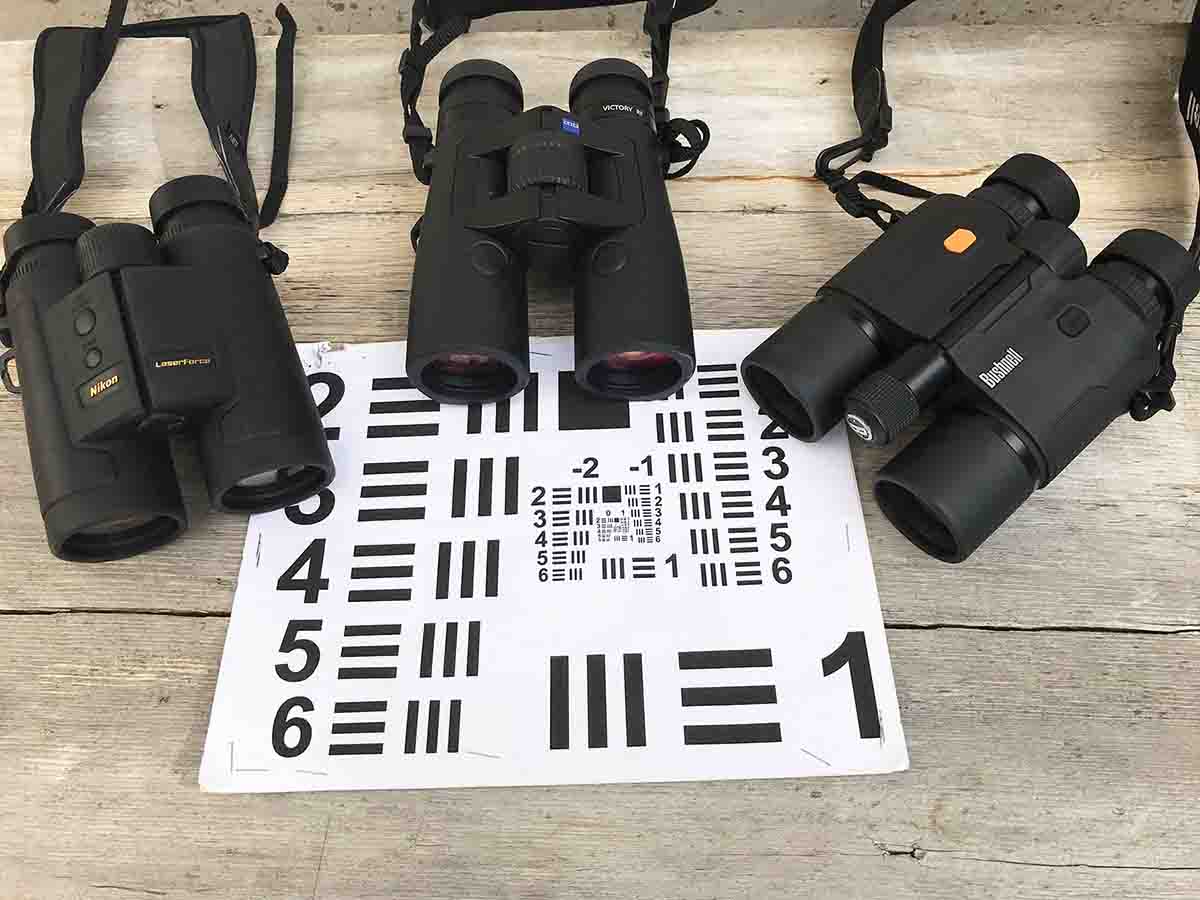
Today, though, a rangefinding binocular is becoming a standard piece of hunting equipment. The convenience of two optics in one unit is expensive. A rangefinding binocular is also no substitute for hunting and shooting skill, but when used correctly it’s an aid to ethical hunting.
I recently tested three popular 10x42mm models.
Nikon LaserForce 10x42mm
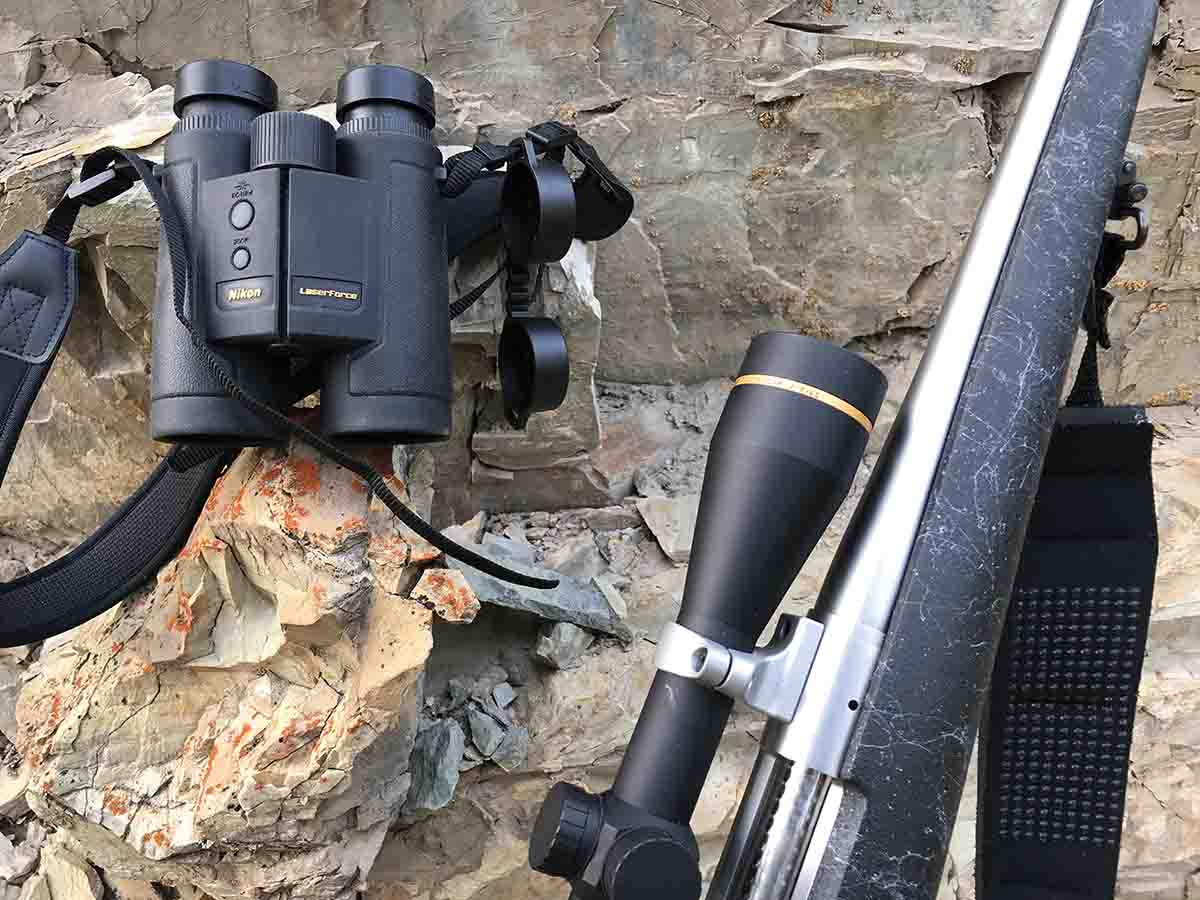
A “belly” on the bottom of the barrels houses the electronics. Other than that, the Nikon is compact and well balanced.
The power/measurement button and setting button are positioned close to each other on the right side of the bridge. The power/measurement button is the larger of the two, and it is located where the index finger normally rests while holding the binocular.
The Nikon is a basic rangefinder with mode settings for adjusting the brightness of the display, distance in yards or meters and horizontal or actual distance to a target. The power/measurement button can be held down for continuous ranging.
Nikon states the binocular measures from 10 to 1,900 yards. That longer distance may be reduced when ranging a dark or small object, like a deer, or ranging in bright sunlight.
Bushnell Fusion 10x42mm
1 Mile ARC
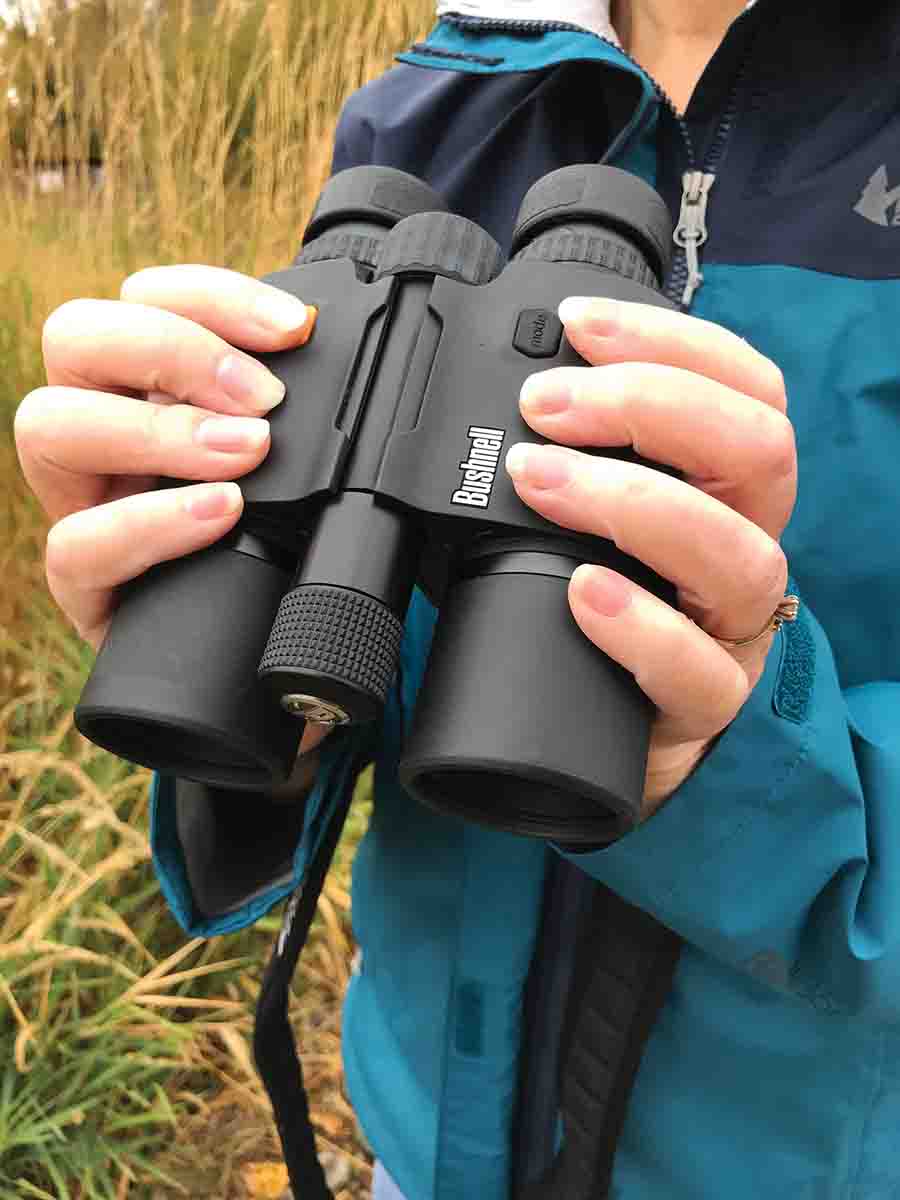
The tops of the Fusion’s barrels are large enough to contain the electronics, and the battery compartment tube sticks out like a third thumb between the objective lenses. The power and mode buttons are on top of the barrels toward the back, where the index fingers would normally rest while using the binocular.
The Fusion incorporates ballistics with its measurements. Set in Bow mode, the binocular displays line-of-sight, angle to target and horizontal distance from 10 to 99 yards. Set in Rifle mode, the Fusion provides line-of-sight, angle and bullet drop/holdover up to 199 inches. The Fusion can be adjusted to match a variety of bullet trajectory groups. Holdovers, to compensate for bullet drop, can be chosen in inches, centimeters, minutes of angle or milliradians. The maximum distance for most objects is 1,000 yards, and one mile for highly reflective objects.
Pressing the power button activates the display that includes an aiming circle. A second press (and hold) registers a distance in the bottom of the display. Targeting modes include Scan, Bullseye or Brush. Scan allows continuous distance updating by holding down the power button and scanning over objects. Bullseye mode permits ranging small targets without mistakenly ranging background targets that provide a stronger signal. A tree icon in the display indicates Brush mode and ignores brush and tree branches so distance is displayed only to background objects. I looked through the tops of some rose bushes to range a deer in a field. Brush mode ignored the bushes, and a circle appeared around the brush indicator showing distance to the farthest object, which was 196 yards to the deer.
Zeiss Victory RF 10x42mm
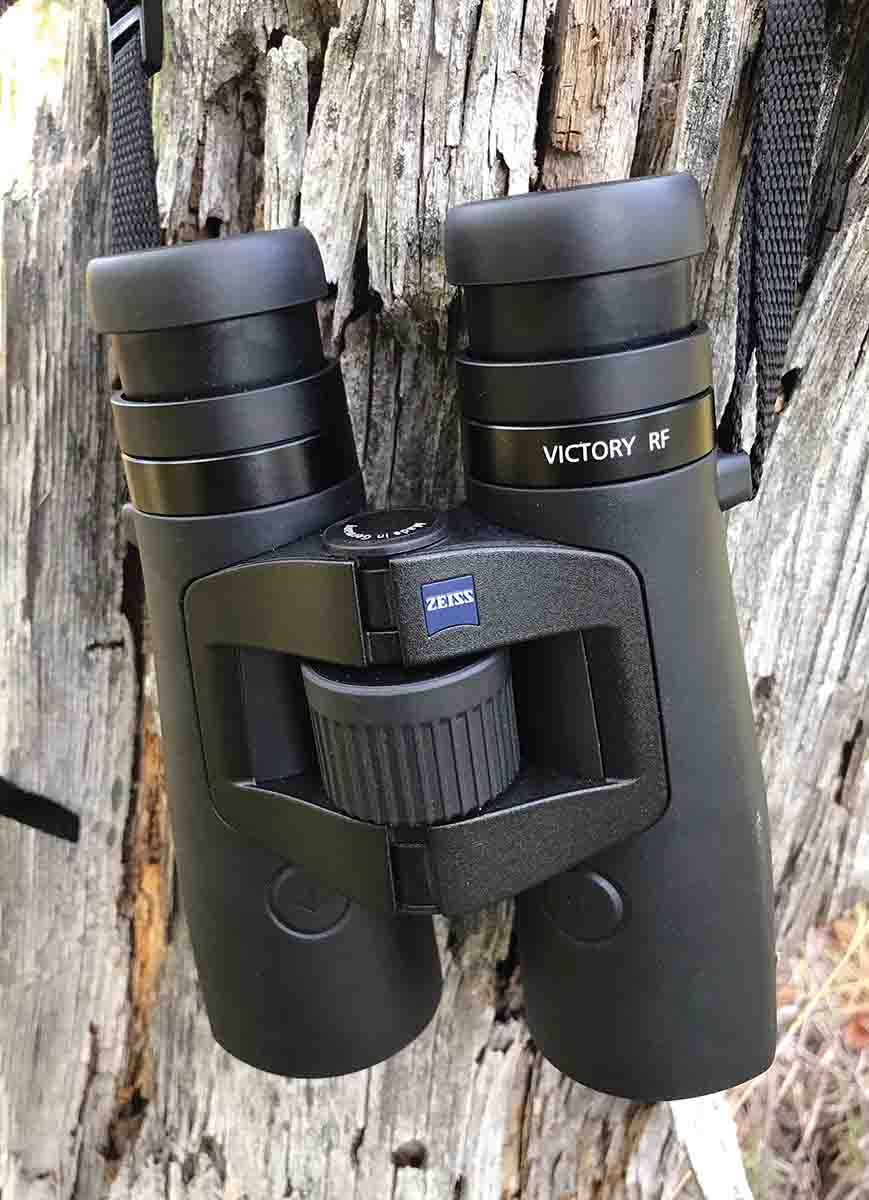
The Victory RF binocular incorporates many of the same functions as the Bushnell Fusion. In addition, the Zeiss can be synchronized with the Zeiss Hunting app on a mobile device to enable an onboard ballistic calculator with sensors that provides compensation data for shot angle and air pressure, temperature and elevation. This allows the Victory RF to calculate and display ballistic holdovers out to 2,500 yards in centimeters, inches, minutes of angle, milliradians or number of scope elevation clicks.
The Zeiss app contains ballistics for many factory loads, and there is room for nine custom ballistic profiles. The app was installed on my iPhone, so I entered the brand and model of scope, its height above the rifle’s bore and turret-adjustment value. For a custom ballistic profile, a Sierra 55-grain SBT bullet was entered with a muzzle velocity of 3,678 fps fired from my .22-250 Remington zeroed for 200 yards.
With the custom ballistic profile entered into the app, I selected the “App to Product” sync button to transfer it to the Victory. I ranged objects, and in a second or so the distance appeared with a correction for holdover in inches. Objects were ranged out to 597 yards, and the same holdover numbers appeared in the Victory as listed in the custom ballistic table.
In the Field
I placed a 1951 USAF resolution test chart at 100 yards in dark shade to test the resolution of the Nikon LaserForce, Bushnell Fusion and Zeiss Victory RF. The smaller the element bars perceptible on the chart, the better the resolution.
In the center and at the edges of the view with the Bushnell, I could distinguish the third element of vertical and horizontal bars in the second-largest group of bars. Using the Nikon I could distinguish one smaller element of bars than with the Bushnell, and the Zeiss revealed one smaller element of bars than the Nikon. All three provided good resolution.
The view dimmed somewhat in the last light of day when the display was illuminated in the binoculars. But the display shut off after a few seconds and the binoculars reverted back to very bright views 45 minutes after sundown. While standing, I took several readings on a distant white building with the three binoculars. The Zeiss read 1,153 yards, the Bushnell 1,158 yards and the Nikon 1,157 yards.
I did not feel handicapped using the Nikon LaserForce, even though it lacked a ballistic display. A yardage reading with the Nikon followed by a quick glance at the ballistic chart on my .270 Winchester would result in a sure hit out as far as I would shoot at an elk. I use a rangefinder differently than they are often advertised for use. When the rangefinder gives a distance to game of about 700 yards, I know that’s too far to shoot and I must stalk closer rather than dial up the elevation turret on my scope and shoot while crossing my fingers, hoping for the best.
The angle-compensated distance feature in all three binoculars is very practical. In the Bushnell it works for 100 to 800 yards. I’ve missed more than one mule deer by miscalculating horizontal range while shooting at a steep angle in the mountains.
The Zeiss Victory RF was right on with its custom ballistic profile for my .22-250 Remington. The profile lists ballistics out to 1,000 yards, which is more than far enough for hunting coyotes during the winter and marmots during the summer. I could also add more ballistic profiles for bullets shot from other rifles. Pushing a button a few times is all that’s required to switch between different ballistic profiles.
A herd of cow elk was bedded way out on a grass flat at the National Bison Range. Only the top of the shoulder, neck and head of a cow was visible. Leaning against the car door for support, the Victory instantly delivered a distance of 562 yards. Several readings remained the same. A bull was circling the cows at a steady walk, and the Victory delivered its distance with each push of a button.
Price and product guarantees are the only drawback to these laser rangefinding binoculars. The retail price is $1,200 for the Nikon LaserForce 10x42mm binocular. It has a limited lifetime warranty on the binocular and limited one-year warranty on the electronics. The Bushnell Fusion 10x42mm 1 Mile ARC retails for $1,550 and has a two-year limited warranty. The Zeiss Victory RF 10x42mm retails for $3,500 and is covered with a limited lifetime warranty on the binocular and a limited five-year warranty on electronics.


